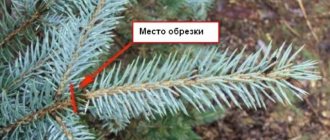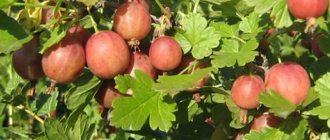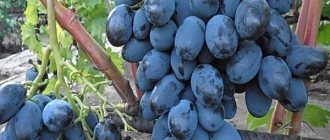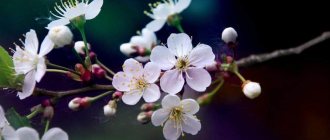Planting the Ito-hybrid “Bartzella” peony, as well as caring for it, is a topic that will be of interest to both experienced gardeners and newcomers to this business. Those who want to decorate their garden with beautiful flowers should definitely take into account the information from this article, which will help to avoid mistakes.
Today, Ito-hybrid peonies of the “Bartzella” variety are very popular among breeders and gardeners. The flowers are distinguished by their rich yellow color and very good frost resistance, thanks to which the plants tolerate winters well even in the coldest areas.
Peonies were first cultivated in China about two thousand years ago, and today Asian countries hold the record for creating new varieties of this plant, among which are Ito-peonies.
By the way, this variety of flowers owes its name to the Japanese breeder Toichi Ito, who developed this variety after many years of fruitless attempts.
Some interesting facts about Ito peonies:
- the root system of the plant is exactly the same as that of tree peonies;
- the height of the bush does not exceed one hundred centimeters;
- in winter, the stems of Ito-peony die off, but with the beginning of the new season they grow again;
- on average, the diameter of the plant’s flowers reaches twenty centimeters;
- the color range of peonies of this variety is quite extensive, as flowers of yellow, white, red, pink, lilac and purple can be found;
- the middle of the flower always contrasts with the outer petals, having a different color;
- flowering of the plant can be delayed for three weeks;
- in a permanent place, Ito peonies can grow for up to twenty years.
The Ito peony "Bartzella" was bred by an American breeder and has a bright yellow color, large double flowers and green leaves and stems, which change color to bronze in the fall. A huge advantage of the plant is the fact that it can stand in a vase for a very long time, remaining intact, and the petals will begin to fall no earlier than two weeks later. Therefore, many gardeners love to cultivate this type of peony.
How to prepare for planting?
Preparing a peony for planting is the initial stage of growing a plant, which requires care and accuracy, since the final result depends on it.
First of all, you need to choose a seedling. Here are some recommendations to help avoid mistakes when choosing.
- It is better to purchase peonies for planting in the fall, since such plants probably already have a formed root system. Be sure to pay attention to the packaging of the peony: the roots must be in a pot or box with soil, and also be extremely wet. Such plants should be planted no later than three days after purchase.
- You can also buy seedlings in the spring, but you need to inspect them more carefully, since spring plants are weaker and have a root system more susceptible to external conditions. The seedling must be inspected for damaged stems, spots on the leaves or dried roots. If any of the above is noticeable, it is better to refuse to purchase such planting material.
Having decided on the choice of seedling, you can proceed to the next stage - preparing the planting site. In order to plant the plant correctly, you need to know that peonies love open sunny areas. A little partial shade is allowed, but some varieties of this crop react negatively to it. It is also undesirable to plant peonies in swampy areas. It is better to give preference to small hills or make a mound in the garden bed yourself.
When planting, pay attention to surrounding plants and buildings. Peonies should not be placed next to objects from which water often drains, so that moisture does not stagnate at the roots of the bush.
As for the type of soil, Ito-peonies are unpretentious to it and can grow in any soil, except for one variety - swampy. Also, the soil should not be acidic, otherwise the plant will wither or grow very weak.
Having completed all the preparations and making sure that everything is done correctly, you can proceed directly to planting.
Features of this variety
- Bush. It grows up to 1 meter, but this is the maximum - most often the height of the bush does not exceed 75 cm. The shape of Bartzella bushes is dense and spreading.
- Stem. Long, but does not need tying. Dense stems are not afraid of wind or heavy rain. A cut bouquet stands well in a vase.
- Leaves. Dark green, dissected, openwork. Closer to cold weather they turn red, becoming dark bronze.
- Flowers. Lush, yellow shade rare for peonies; crimson (bright pink, red) streaks run at the base of the petals. Diameter - 20 cm and more. The variety blooms once, with rare exceptions (in spring, from April to May), but very profusely. Moreover, the older the bush, the more buds are formed on it - in a good situation there can be up to 60 of them. Flowering is accompanied by a strong and pleasant aroma. A cut bouquet will last 7-10 days without crumbling.
- Root. Well developed, but not deep. At the same time, Bartzella’s rhizome does not freeze in winter.
- By purpose, the variety is considered universal. According to the variety series, this is an ito-hybrid.
What is it - an ito hybrid?
Ito-peonies are a variety group, the “parents” of which are herbaceous and tree-like peonies. The group received its name in honor of its creator, breeder Ito Toichi (Japan).
Like herbaceous varieties, ito hybrids die off in late autumn and grow back in the spring, producing flowers at the ends of young shoots. And from their tree-like relatives, these peonies inherited the structure of the above-ground and underground parts of the bush.
History of the creation of Bartzella
Peonies have been grown in China for several hundred years, but the Japanese created the basis for Bartzella by breeding yellow varieties; This successful idea was developed by American breeders.
I was told that the author of Bartzella was very devout and named the peony after the name of his pastor.
The advantages of this peony
- Shade tolerance.
- High winter hardiness.
- Not demanding on soil. Although, of course, if it is fertile, Bartzella will show maximum beauty + for a year or two you will not have to additionally fertilize the flowerbed.
- Low maintenance requirements.
- A plant can grow in the same place for years without losing its beauty.
- High decorative qualities, strong aroma that can be felt a couple of meters from the bush.
Does it have any disadvantages?
There are few of them, and they can hardly be called serious flaws.
For example, a young bush may bloom in the year it was planted, but the flowers will upset you at first - they will not repeat the design on the packaging. Only after 2-3 years will Bartzella bloom the way this peony should - yellow, lush and abundant.
How to plant: step-by-step instructions
Step-by-step instructions for planting peonies will be useful even for experienced gardeners. To avoid mistakes and plant the plant correctly, we recommend following our advice.
- First, prepare the seedlings. If you use flowers purchased for seedlings in pots, then before removing them, the soil must be moistened to free the roots without damaging the plant.
- The next step is to prepare the planting hole for the Bartzella peony. It needs to be dug up in advance so that the soil has time to become saturated with oxygen. The depth of the pit must be at least forty-five centimeters, and the radius must be at least seventy-five centimeters.
- It is necessary to lay a drainage layer at the bottom of the finished hole, which will prevent excess moisture from reaching the roots of the plant. For this purpose it is better to use fine gravel or sand.
- The next layer should be a mixture of fertile soil with mineral fertilizers. It needs to fill the hole approximately two-thirds.
- Now you should plant the seedling in open ground. This must be done in such a way that the buds of the plant are at the same level, and also recessed into the ground no more than five centimeters.
- If a seedling is planted from a pot, it should be lowered into the hole along with the soil in which it grew.
- Cover the planted peony with soil and compact it on top with your palm.
- Water the plants, allocating a bucket of water to each of them.
After the peonies are planted, the soil under them should be mulched to slow down the evaporation of moisture. In the next few weeks, until the roots are established, the crop needs to be provided with quality care.
Reproduction of a mature (3 years and older) bush
It is carried out by dividing the rhizome (bush). This breeding should be carried out in mid-spring (from the last week of April to the first week of May). But if the bush is old enough and your region is warm, you can dig it up and divide it in the 2-3 week of August.
By the way! Be prepared for the fact that the dense peony root will have to not only be cut with a knife, but perhaps also sawed. So prepare the appropriate tool.
- Before digging up the bush, water it well.
- The root should not be divided more than 2 times.
- Live buds should be visible on each division (in the fall there will be branches in their place).
- Immediately rub the cuts with crushed coal.
- Hide the roots in the utility room for 2-3 days, where they dry slightly. After this, they can be planted in a new place.
Bartzella transplant
And this is even easier than propagating a bush.
Bartzell needs to be watered and dug up (don't be afraid, peony roots are not at all tender). In the new place, prepare the soil, fertilize it and, if necessary, lay drainage under the roots, and plant the bush.
By the way! Even a mature bush may not bloom after transplantation, both for a year and for two. It's not a big deal if its stems and leaves look healthy. Let the plant get used to its new location and take root well, and it will still delight you with its beauty.
Description of the variety
The plant grows within the range of 65-90 cm in height and diameter, so that in appearance the crop may resemble a ball. The bush's saddles are strong and can stand straight even without support. In winter they die off. The leaves are dark green in color, pinnately divided, and grow alternately and densely. The rhizome is tuberous, powerful.
The buds are large, 20-25 cm in diameter, semi-double type
Flowers can grow singly or in inflorescences. They are located on top of the bush, but sometimes on the sides. The buds are large, 20-25 cm in diameter, semi-double. The petals are silky, dissected along the edge. They grow in several rows. The outer petals are larger than the inner ones. The color is lemon yellow, but there are red spots at the base of the petals, which fade greatly towards the end of flowering. The anthers of the stamens are yellow. The aroma has lemon notes.
The first flowering can be seen only on a 3-year-old bush. An adult plant can produce up to 60 buds per season. Flowering is medium late, long lasting – 2-3 weeks.
Photo of Bartzell peony bush
Plant in autumn
Peony Bartzella
Description of the Bartzell peony - photos, planting and care:
- Itoh Bartzella peony (lat. Paeonia Itoh Bartzella) is bright yellow in color with whitish edges on the petals. The hybrid was bred by crossing a tree peony and a herbaceous peony. The bush is spreading, dense, 70-80 cm in height. The stems are strong and practically do not bend under the weight of the inflorescences. The leaf is dark green and open-worked; by autumn it acquires a bronze tint.
- Peony blooms in May-June and forms lush caps of bright inflorescences . The flowers are double with yellow petals, with red strokes at the base. The aroma is delicate and persists even when cut. Flower diameter is up to 25 cm, flowering period is 2-3 weeks.
- They take root well in any soil, are unpretentious in care, and are especially responsive to flowering in fertile soil. They reproduce by dividing the bush. The root system is well developed, the tuberous roots are powerful. Varietal qualities appear 2-3 years after planting. Every year the number of inflorescences increases.
- The variety is used in landscape design and folk medicine. It tolerates frosts well down to -30 without additional shelter, or rather high hilling of the bush. Resistant to diseases and pests and tolerates drought well.
Video: Peony Bartzella
Reproduction of Peony Bartzell
Like all other flower hybrids, Bartzell's peony cannot reproduce by seeds. For its propagation, the method of dividing the bush is used. But how to do this? The procedure is quite simple and is carried out from late summer to mid-autumn. To divide the bush, choose plants that are at least 3 years old.
An adult peony is dug up very carefully so as not to damage its underground part or break the pagons. Then the adhering soil is removed from the root. If the soil is dry, you can put the root in water so that the soil falls away on its own. When the root is clean, it must be divided into 2 or more parts. It is very important that each part contains a root with renewal buds. If there are no renewal buds, the plant will not survive.
To cut the root, use only a sharp, disinfected knife. After the procedure, the root cut sites are treated with crushed coal or a solution of potassium permanganate (weak). After they dry a little (so that the juice does not stand out), you can plant the roots separately.
To propagate the Bartzell peony, the method of dividing the bush is used.
Peonies after flowering
After the flower fades, it needs care. These procedures are not complicated, which is why every gardener can carry them out.
Transfer
Preventive measures are carried out to prevent the occurrence of diseases. To do this, remove the root system and immediately deepen it into a new hole, but the roots should be located at a depth of 5 cm from the surface of the substrate.
Transplantation of the evasive peony is carried out in stages
Trimming
Bushes are pruned in the autumn, but before frost sets in, they are pruned so that their height does not exceed 10 cm.
You should know! All trimmings are necessarily burned under a certain pressure. In this case, it will be possible to avoid the appearance of pests.
Preparing for winter
The use of shelters is not required for an adult bush; it survives even the most severe climatic conditions. But young seedlings need to be protected, because in late autumn they are sprinkled with ash, and spruce branches are laid on top. Shrubs are pruned to prevent diseases.
Planting peonies
In order for the Ito hybrid to develop well, it needs to find the right place to plant. It is better to choose a sunny area, but during the day a light shade will not hurt so that the petals do not bake under the hot sun. This should not be a hole, since excess moisture is detrimental to the plant. You can plant Bartzel's peony from the end of August and throughout September. If the climate is mild, then planting is carried out in October.
Land for planting is prepared in advance. You can create a good soil mixture from 3 buckets of plain soil, 1 bucket of compost, 300 g of wood ash, 150 g of superphosphate. If the soil is clayey, then sand is also added to it. Acidity is adjusted after mixing the soil. If the soil is acidic, dolomite flour is added to it. The ideal values for the land where peonies grow are 6.5-7.5 pH.
You can plant the Bartzell peony from the end of August and throughout September.
The seedling is inspected before planting. The roots need to be soaked for half an hour in a solution of Maxim or potassium permanganate to disinfect. Soaking the roots in a solution of Epin or Zircon will help speed up the establishment of a plant in a new place.
The hole for planting the plant is made 80-100 cm wide and deep. Drainage made of broken bricks, pebbles, expanded clay or something similar is poured onto the bottom. 2/3 of the hole, on top of the drainage, is filled with planting soil. A seedling is placed on it so that the roots do not bend and sprinkled with earth. The buds should be covered with 2-3 cm of soil so that they germinate faster in the spring. After planting, the soil around the bush is compacted with hands and watered with warm water (1-1.5 buckets).
Growing Bartzella flower
The flower does not cause any trouble for gardeners. The main thing is to properly prepare for landing.
Selection of seedlings
Planting material (rhizome cuttings) is purchased in agricultural stores. Tubers are sold in peat pots or as seedlings in containers.
The rhizomes are taken elastic, without rot, with 3-5 growing points. There should be no damage or breaks on the tuber. Peony hybrid Bartzell seedlings are purchased immediately before planting.
The crop is not propagated by seeds. The method is needed only by breeders. At home this is not rational.
Boarding time
Peony Ito hybrid Bartzell is planted in the fall. September is the optimal time throughout Russia. There is still a month before frost, the plant will have time to take root and overwinter safely.
You should know! Spring is also possible, but only when the threat of return frosts has passed and the soil has warmed up sufficiently.
Selecting a site, preparing the soil
The plant exuberantly displays its decorative qualities in elevated sunny areas. Tubers are sensitive to excess moisture and rot. Therefore, the peony Itoh Bartzella is not planted in lowlands and places where groundwater is close.
They do not plant it near buildings, so that water from the roofs does not spoil the tubers. Near solid metal fences or brick walls is also not a suitable place - the plant will suffer from the heated material. Fruit trees are bad company for peonies.
The crop prefers fertile, loose soil. If there is high acidity in the area, then the matter is corrected by liming. Sand is added to clay soils. Before planting, the plot is dug up, weeds and stones are removed.
Reproduction by division of rhizomes
Planting step by step
When the tubers and the area are prepared, planting begins. The process looks like this:
- Dig a hole measuring 50x50 cm.
- Expanded clay is poured onto the bottom to remove excess moisture.
- Next comes a layer of sand.
- Fertile soil is poured onto it in a heap. It consists of peat and garden soil. Add ash, superphosphate, and dolomite flour.
- Inspect the rhizomes. If there is rot, cut off with a disinfected knife. The material is kept in manganese (2 g per 5 liters of water).
- A seedling is placed in the center of a mound of soil and the roots are straightened.
- Sprinkle with earth.
At the end of the action, the hole is watered and mulched with peat.
Caring for Bartzell Peonies
Beautiful flowers, a rich aroma, and decorativeness can only be achieved with proper care of the bush.
- to water the flower often. Bartzell's peony is drought-resistant, but does not tolerate excess moisture. For this reason, it is better that the soil has time to dry out between waterings. It is important to focus on the weather; if it rains often, you don’t have to water the bush at all; if there is a prolonged drought, watering is done once a week.
- Weeds . The soil under the bush should always be soft and loose. To do this, it is treated from time to time with a hoe and rake. Weeds should be removed by the roots as they appear so that they do not spread pests and diseases throughout the area.
- Feeding is done 3 times a year. In spring, peony needs nitrogen, before and after flowering - superphosphate and potassium sulfate.
- Pruning of the ground part of the bush is carried out in the fall. It is necessary to cut off all the pagons, leaving stumps 7-8 cm high.
With proper care of the bush, Bartzella will delight you with lush flowering year after year, and the appearance of the peony will delight you with its decorativeness.
Care
Despite its unpretentiousness, the peony needs appropriate care. But it does not require any special or complex measures.
Watering
This variety needs regular watering, and in some cases it will require a lot of water. So, in dry times the amount reaches two buckets. You can determine the time of watering by looking at the ground near the bush - it will be needed when the top layer of soil dries out. Do not allow water to stagnate under any circumstances.
Loosening and weeding
It is necessary to loosen the soil of the Bartzella peony as often as possible, especially during the dry period and after heavy rains. Carefully remove all weeds - they greatly interfere with growth.
Mulching
These peonies are frost-resistant, but it is better to cover them for the winter, especially young bushes. To do this, use spruce branches, dry humus or leaves from the peony itself. After the snow melts, the mulch must be removed so that the plant can immediately begin to grow.
Top dressing
Be careful when feeding, do not apply too much, otherwise the bush will have a lot of leaves and few flowers.
See also
Description and characteristics of Red Charm peony, cultivation and careRead
in spring
After the snow has melted and you have removed the mulch, feed the plant with nitrogen. Then it will quickly become covered with green leaves.
When forming buds
For better flower growth, complex fertilizers are suitable.
During the flowering period
During the blooming of buds and later, you can use potassium chloride and superphosphate. Mineral concentrates or special complex fertilizers for such crops are also suitable.
Before frost
To prepare the bushes for the ground, also use mineral concentrates, preferably with a high content of potassium and phosphorus.
Irrigation and spraying
Bushes need to be sprayed only in case of drought. During rainy periods there is usually enough water.
Pest treatment
Peony Barcellus is resistant to most diseases and pests. But still, treatment against some of them is necessary so that the bush retains a healthy and beautiful appearance for a long time.
Spider mite
Typically, solutions of insecticides or fungicides are used for prevention.
Aphid
Aphids can also be eliminated using insecticides. For example, Actellik and Biotlin are good options.
Ants
Insecticides can be used, and repellents that need to be sprayed over the bushes are also suitable.
Trimming
It is carried out in the fall, before wintering. Peony is very different from other plants in that it can be cut almost to the ground, but gardeners advise leaving about 8 centimeters.
If you cut lower, then you don’t have to worry about the safety of the bush, because buds always remain underground. To prevent the plant from rotting, prune on a dry, warm day. During the summer months, prune after the flowers have dried. Also pick off the buds on young plants, then the bush will become stronger.
Reviews from flower growers about peonies of the Bartzella variety
The yellow Bartzell peony is known throughout the world for its fragrance and beauty. This plant is planted in gardens, vegetable gardens, and flower beds. But what is the opinion of flower growers about this flower?
- Natalya Polka : “The Bartzella Peony was given to me by my sister. At first it seemed to me that it would not take root, since our winters are cold. But the bush gave its first shoots in the spring, and a couple of years later it pleased me with flowers. Of course, it blooms amazingly - the buds are bright, large, fragrant. Some I cut and make bouquets, the rest just decorate the garden. The bush grows without insulation, I only do preventive treatments and fertilize against pests and diseases. I can recommend it even to beginner flower lovers.”
- Alexandra Stepanyuk: “Bartzella is the decoration of my flowerbed. It grows directly under the sun, without shelter, but is not afraid of heat (I have never noticed burns on the leaves). The flowers are impressive in size and color - the neighbors are delighted! There is no need to water the bushes often; I also rarely fertilize them. Sometimes in the winter, I lay straw under the bush in case the snow falls late. Last year, I divided the bush into 2 parts and planted it in different areas, in the spring they produced young pagons, which means they have taken root!”
- Irina Golub : “Bartzella planted her peony on the sunny side of the house so that it would have enough light. Every year he builds up many units. If you look at the flowerbed from a distance, the plant looks like a green ball. The flowers on it stand out brightly. The buds are large, light yellow with a pink base of the petals. In general, I decided to buy a couple more seedlings - I haven’t decided to divide my bush yet.”
Peony ito hybrid Bartzella (also known as ito peony Bartzella and peony bartzella) is a perennial and tree-like plant. Peony appeared in 1948 by crossing varieties such as Kinko and Kakoden. The author was the Japanese breeder Ito. The name of the peony has the prefix ito in honor of its creator, and the second part of the name “Bartzella” comes from the surname Barth (the pastor of the scientist’s family). More than a thousand experiments were carried out before the bartzella peony was born. The flower became a separate crop thanks to the breeder’s student Andersen and gained popularity only in 1974 after the death of its author. The flower is the most expensive among other varieties of peonies.
History of the variety
The year of birth of this variety is 1948, when breeder Ito obtained it by crossing two other varieties:
- paternal plant – variety Kinko (tree-like);
- maternal - Kakoden (milky white).
The result was the appearance of six bushes with yellow buds, which is what the scientist wanted. But it was not Ito himself who finished work on the new variety, but his student and assistant, Anderson, who collaborated with Ito’s widow. Only in 1974 did Bartzell's peonies attract the attention of gardeners and become popular. 2002 was another important date when the variety received the Grand Prix at an international exhibition.
Description of Bartzell's peony
The bush has a round shape, the foliage is dense. The stems of the plant are a woody base with leaves. The length of the stem reaches one meter. During the winter, the leaves die off, but the woody part remains. Peony is ready for frosts of about 30 degrees. If any parts of the plant are frozen, they will recover as the weather warms up.
The flowers are yellow with an orange core, large in size and double. Size – about 25 cm in diameter. The yellow Bartzell peony begins to bloom in early summer and continues to bloom throughout the month. The number of flowers depends on the age (the older, the more), about 60 pieces per bush. Large leaves of carved shape and dark green color. The plant is unpretentious, resistant to viruses, and can tolerate drought. It lasts a very long time in the form of a bouquet (about two weeks).
Peony evasive (Maryin root) - what kind of variety is it
The plant is a perennial crop; the height of an adult paeonia bush can reach more than 10 cm in height. This is a large shrub with branched stems, each of which bears a flower. Purple-pink buds can reach 13 cm in diameter.
Peony evasive
Additional Information! The lanceolate foliage of the Maryin Root peony is bright green and grows up to 30 cm in length and width. In autumn the leaves turn a beautiful shade of red.
The plant has a well-developed root system, which has spindle branching. With growth, the roots can go to a depth of 90 cm. This factor must be taken into account when replanting. This is not easy to do. New roots grow every year and actively develop during the growing season.
The pistils contain black seeds; they ripen at the end of summer - the first month of autumn. They can be used to propagate new bushes.
Agricultural technology
Below are some basic information about planting.
Boarding time
The best time of year for planting is autumn. You should expect that there should be a month before frost so that the plant has time to take root.
Note! Peony seedlings are planted in the morning or evening. If you plant in the morning, you should wait until the evening to water.
Soil for planting peony
The soil is either sandy loam or loamy. Groundwater must run deep. Minerals must be present in the soil, otherwise fertilizers must be added.
Area suitable for planting
The place where the plant is planted should be well lit; direct sunlight on the flower is unacceptable. The place must be open. It should not be planted in the shade, as the flower will not receive the necessary sun to bloom beautifully. It is not recommended to plant in low places; the best place is on a hill. The site is immediately selected as a permanent place for the flower. The peony will bloom in 2-4 years of life.
Seedling preparation
Seeds are not used for planting, as the plant is a hybrid variety. It should be planted with roots. There are two planting options: purchasing a ready-made seedling or dividing the root of an existing plant.
If a flower seedling is purchased, it must be from a high-quality and trusted manufacturer. During inspection, special attention is paid to the presence of rot, damage and holes from pests. You should buy healthy, elastic tubers with 2-3 buds in order for the plant to resume growth. If there are 4-5 buds on the planting material, then this is the key to good survival. The number of buds should preferably correspond to the number of roots. Cleaning is carried out before planting. It is necessary because the roots are stored for a long time, and rot and mold form on them. The cleaning procedure involves removing these troubles with a knife. The cut areas are treated with ash. Next, the tubers should be soaked for an hour in a manganese solution for disinfection.
Seedling preparation
Although this variety is unpretentious, it is necessary to choose and prepare the seedling correctly so that your efforts are not wasted.
How to choose
The choice of planting material depends on the number of renewal buds on it. There should be at least two of them, ideally five, and the same number of roots.
How to prepare
Preparation consists of the following steps:
- Carefully cut off rotten and moldy areas.
- Sprinkle the cuts with ash.
- Disinfect the seedlings in a solution of 5 liters of water with 2 grams of potassium permanganate. This will also serve as prevention.
See also
How to properly prepare peonies for winter, pruning, covering and processingRead
Application in landscape design
This magnificent ornamental plant is widely used in landscape design. Bartzell's peony can be used both for single plantings and as part of luxurious pictorial compositions.
Due to the fact that the bush grows strong, does not bend or break, the Bartzell peony serves as a real decoration for alpine slides, flower beds, flower beds, and flowerpots. It is also important that even frosts do not affect the decorative appearance of the bush - with the onset of cold weather, the peony still remains attractive.
As mentioned above, the flower can last longer when cut than all other peonies. This makes the Bartzell variety indispensable for creating magnificent bouquets.
Description
The variety was bred in the 40s of the last century in Japan by scientist Toichi Ito and his student. In honor of the breeder, all peonies bred by him are also called Ito-peonies. The name “Bartzella” comes from the name of the family pastor of the breeder Bart. To create the variety, two peonies were crossed - Kinko and Kakoden. To achieve such an impressive result, the scientist conducted more than 1,200 crossing experiments.
It is interesting that Toichi Ito never completed the work - he died, having managed to produce six viable yellow plants. And his student, with the help of the scientist’s widow, was able to obtain from the resulting material a variety now known as Bartzella. The resulting variety gained fame, recognition, scientific description and became a real hit only in 1974.
The plant is extremely decorative - its huge luxurious yellow flowers are impossible not to notice. This hybrid is one of the most expensive varieties of peonies and can become a real pearl of any gardener. The plant has a gold medal from the American Peony Society.
The Bartzell peony is distinguished by its exquisite petals, the color of which is yellow with a red center (see photo). The petals have a semi-double structure, which makes the plant even more decorative. The diameter of one flower reaches 20 cm. The stem of the plant is dense, strong, and woody in the lower part. The bush does not need support. When cut, the Bartzell peony can last longer than all its fellows.
In fact, the Bartzell peony is a herbaceous perennial that also has the benefits of a tree plant. The bush grows with a regular rounded shape, has dense foliage and a height of about 90 cm. About 60 flowers bloom on one adult bush per season. The flowering period is long, which pleases all gardeners.
The foliage of the plant is also decorative - the leaves have a bright green color and a carved, elegant structure. The variety survives winter well and can withstand frosts down to -30 degrees. And even if some of its parts are frozen, with the onset of warmth the plant is able to recover. The variety has amazing resistance to viral diseases, is unpretentious, can grow even in infertile soil, and withstands drought.
Landing
A peony of this variety can grow in one place for decades. A well-lit and warm place is suitable for it. The plant should not be shaded by large trees or buildings. Bartzell's peony needs nutrient-rich soil, without stagnant water. The plant will not develop normally in airtight, heavy soils. During planting, you should pay attention to the fact that the buds are at a depth of five centimeters from the soil surface.
If the Bartzell peony is planted in violation of the rules of agricultural technology, the bush will not bloom. Varietal qualities after transplantation appear only in the second or third year. The planting hole is dug in advance so that the soil subsides. Its size for this variety is 60x60 cm. Its bottom is lined with a mixture consisting of:
The plant requires primary feeding, which depends, first of all, on the composition of the soil. It is usually recommended to use the following composition:
It must be taken into account that the Bartzell peony loves neutral and slightly alkaline soils. Depending on the type of soil, the following fertilizers are added per square meter to the mixture of humus and manure for deoxidation:
- double superphosphate (1.5 cups);
- wood ash (300-500 g);
- dolomite flour (from 150 to 500 g);
- bone meal (2 cups).
A small amount of mineral fertilizers will not hurt either. All these components are mixed with soil, and then the hole is filled two-thirds with this mixture. The seedling is placed at a slight slope in the center. Renewal buds should be horizontal when planting. The root system is laid out on a small layer of sand, and the root collar must be sprinkled on all sides with a composition of sand and ash in equal proportions. This will minimize the possibility of rot on the roots.
When filling in the soil, make sure that the earthen lump above it is no more than five centimeters, otherwise this hybrid will not bloom. The plant does not like hollows in which moisture collects in the spring after the snow melts, and in the summer - rainwater. Peony does not like shade, but tolerates partial shade very well.
History of selection
Until the middle of the last century, unsuccessful attempts were made to breed yellow peonies. But it was not possible to achieve the desired result. And only thanks to the painstaking work of the Japanese breeder Toichi Ito, who and his student carried out more than 1,200 artificial crossings, it was possible to obtain 6 plants with yellow pigment. But he failed to complete his work. The endeavor was continued by his student, the American breeder R. Anderson. In 1986, the world was introduced to the unique itho-hybrid Bartzell peony, obtained by crossing a tree-like and herbaceous species.
This variety gained wide popularity in 2002, when it confirmed the stability of its yellow pigment and compliance with all declared characteristics. Experienced flower growers claim that the Bartzell peony is one of the most perfect species. The first copy of this ito hybrid was sold in 1999 for $1,000. But after 10 years its price dropped to $100.
Bartzell's yellow peony has participated in many exhibitions and has been awarded the following awards:
- APS Grand Champion National Exhibitions (2002);
- APS Gold Medal (2006);
- Award of Landscape Merit (2006).











